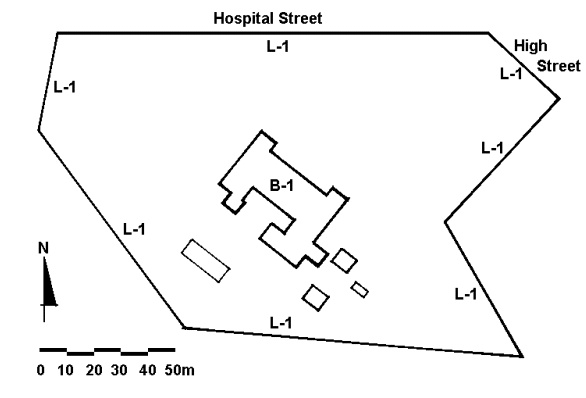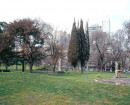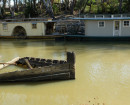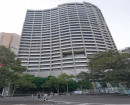MALDON PRIMARY SCHOOL NO.1254
109 HIGH STREET MALDON, MOUNT ALEXANDER SHIRE
-
Add to tour
You must log in to do that.
-
Share
-
Shortlist place
You must log in to do that.
- Download report




Statement of Significance
STATEMENT OF CULTURAL HERITAGE SIGNIFICANCE:
Maldon Primary School No 1254 was opened in 1873, operating at first at the premises of the previous church schools. A site for a new school was chosen by Government, but the current large reserve was chosen after local agitation for a more prominent and commodious location. The substantial building of five large classrooms, three small classrooms and master's office, to accommodate 750 pupils, was opened with pomp and ceremony in 1875. Such an investment indicated some confidence in the future of a town which depended on the vagaries of the gold mining industry, and in which population had declined considerably from the peak of the 1860s. The confidence was justified ? the greatest attendance of 640 was in the 1890s, in a boom period when the many deep quartz reef mines in the area were at their most profitable. During the twentieth century both local population and school attendance declined, apart from a minor resurgence during the construction of the Cairn Curran Reservoir in the 1950s.
The HR Bastow design in Free Gothic style was derived from the symmetrical plan of the Buninyong competition school design, with an additional classroom extending off the south wing. A similar approach was taken at Creswick No 122, Golden Square No 1189 and Castlemaine No 119 schools, but Maldon remains a more intact example through the sympathetic window alterations and minimal other alterations and additions. The school was constructed by local builder W Smith in red brick from the local Wagener's Brickworks, set on a base of the pervasive dark local ragstone work finished with quarry face granite ashlar quoins. The red brickwork is relieved by cream brick banding, diaper patterning and voussoirs, bluestone sills (now painted), and stucco gable parapet. The steep slate roof is punctuated by gablet vents, and minor roof gables on the north facade, and on the east facade with an extension sheltering the school bell. Substantial changes and additions were made to the window layout c1912, but considerable care was taken to integrate the changes with the original design intent.
Maldon Primary School No 1254 is of historical and architectural importance to the State of Victoria.
Maldon Primary School No 1254 is historically important for its ability to demonstrate a particular phase in the development of goldfields towns in the 1870s. Many towns in the goldfields had languished after the easily worked alluvial fields were exhausted, but Maldon was more persistent. By the 1870s Maldon was becoming a service centre for the district. In a period from 1873 to 1876 when over 600 State Schools were constructed, the school at Maldon was considered of sufficient importance by the Education Department to merit this large and elaborately decorated building. The local desire for a substantial school as an investment in the future of the town, was indicated by the agitation for the adoption of this large and prominent site. The scale of the school, the largest public building in the town, proved to be well warranted by the boom in deep quartz mining from 1880-1900. The school has continued to be a major focus in community life up to the present.
Maldon Primary School No 1254 is of architectural importance as a fine example of schools based on reduced adaptations of the influential Buninyong competition School plan. The Maldon School has retained much its original expression through the sympathetic window alterations, and the planning is still readily appreciated as few alterations to the planning, or attached extensions have been made. The Maldon school displays more elaborate decorative treatment than other regional schools of this type. At the same time the use of brick made in the town, ragstone from Tarrengower and Harcourt granite in the base, and slate flooring from Barkers Creek, gives the building a regional flavour and indicates the investment of local energy and expertise in the project.
-
-
MALDON PRIMARY SCHOOL NO.1254 - History
Contextual History:History of Place:
Maldon State School No 1254 was opened in 1873, operating at first from the premises of the previous church schools. A site for a new school was chosen by Government, but the current large reserve was chosen after local agitation for a more prominent and commodious location. The substantial building of five large classrooms, three small classrooms and masters office, to accommodate 750 pupils, was opened with pomp and ceremony in 1875. Such an investment indicated some confidence in the future of a town which depended on the vagaries of the gold mining industry, and in which population had declined considerably from the peak of the 1860s. The confidence was justified - the greatest attendance of 640 was in the 1890s, in a boom period when the many deep quartz reef mines in the area were most profitable. During the twentieth century both local population and school attendance declined, from a minor resurgence during the construction of the Cairn Curran Reservoir in the 1950s.
COMPARISON:
A similar planning approach was taken at Creswick No 122 (which Peterson recommends to HBR), Golden Square No 1189, and Port Fairy 6247 (on the GBR). Maldon remains a more intact example through the sympathetic window alterations and minimal other alterations and additions.
Associated People: Owner DEPARTMENT OF EDUCATION;MALDON PRIMARY SCHOOL NO.1254 - Permit Exemptions
General Exemptions:General exemptions apply to all places and objects included in the Victorian Heritage Register (VHR). General exemptions have been designed to allow everyday activities, maintenance and changes to your property, which don’t harm its cultural heritage significance, to proceed without the need to obtain approvals under the Heritage Act 2017.Places of worship: In some circumstances, you can alter a place of worship to accommodate religious practices without a permit, but you must notify the Executive Director of Heritage Victoria before you start the works or activities at least 20 business days before the works or activities are to commence.Subdivision/consolidation: Permit exemptions exist for some subdivisions and consolidations. If the subdivision or consolidation is in accordance with a planning permit granted under Part 4 of the Planning and Environment Act 1987 and the application for the planning permit was referred to the Executive Director of Heritage Victoria as a determining referral authority, a permit is not required.Specific exemptions may also apply to your registered place or object. If applicable, these are listed below. Specific exemptions are tailored to the conservation and management needs of an individual registered place or object and set out works and activities that are exempt from the requirements of a permit. Specific exemptions prevail if they conflict with general exemptions. Find out more about heritage permit exemptions here.Specific Exemptions:EXEMPTIONS FROM PERMITS:
(Classes of works or activities which may be undertaken without a permit under
Part 4 of the Heritage Act 1995)
General Conditions:
All exempted alterations are to be planned and carried out in a manner which
prevents damage to the fabric of the registered place or object.
Should it become apparent during further inspection or the carrying out of
alterations that original or previously hidden or inaccessible details of the
place or object are revealed which relate to the significance of the place or
object, then the exemption covering such alteration shall cease and the
Executive Director shall be notified as soon as possible.
If there is a conservation policy and plan approved by the Executive Director,
all works shall be in accordance with it.
Nothing in this declaration prevents the Executive Director from amending or
rescinding all or any of the permit exemptions.
Nothing in this declaration exempts owners or their agents from the
responsibility to seek relevant planning or building permits from the
responsible authority where applicable.
Exterior
Minor repairs and maintenance which replace like with like.
Removal of extraneous items such as air conditioners, pipe work, ducting,
wiring, antennae, aerials etc, and making good.
Installation or repair of damp-proofing by either injection method or grouted
pocket method.
Regular garden maintenance.
Installation, removal or replacement of garden watering systems.
Interior
Painting of previously painted walls and ceilings provided that preparation or
painting does not remove evidence of the original paint or other decorative
scheme.
Removal of paint from originally unpainted or oiled joinery, doors,
architraves, skirtings and decorative strapping.
Installation, removal or replacement of carpets and/or flexible floor
coverings.
Installation, removal or replacement of hooks, nails and other devices for the
hanging of paintings, posters and other wall mounted artworks.
Refurbishment of bathrooms and toilets including removal, installation or
replacement of sanitary fixtures and associated piping, mirrors, wall and
floor coverings.
Installation, removal or replacement of kitchen benches and fixtures including
sinks, stoves, ovens, refrigerators, dishwashers etc and associated plumbing
and wiring.
Installation, removal or replacement of ducted, hydronic or concealed radiant
type heating provided that the installation does not damage existing skirtings
and architraves and provided that the location of the heating unit is
concealed from view.
Installation, removal or replacement of electrical wiring provided that all
new wiring is fully concealed and any original light switches, pull cords,
push buttons or power outlets are retained in-situ. Note: if wiring original
to the place was carried in timber conduits then the conduits should remain
in-situ.
Installation, removal or replacement of bulk insulation in the roof space.
Installation, removal or replacement of smoke detectors.
-
-
-
-
-
MALDON DISTRICT HOSPITAL
 Victorian Heritage Register H1683
Victorian Heritage Register H1683 -
GORDONVILLE
 Victorian Heritage Register H0412
Victorian Heritage Register H0412 -
FORMER MALDON COURT HOUSE
 Victorian Heritage Register H1652
Victorian Heritage Register H1652
-
'Boonderoo', House and Outbuildings
 Greater Bendigo City
Greater Bendigo City -
'Riverslea' house
 Greater Bendigo City
Greater Bendigo City -
1 Adam Street
 Yarra City
Yarra City
-
-












